Model Settings
Overview
Nanonets provides a flexiblity to define and customize model settings, enabling users to tailor how documents and pages are processed. This guide will walk you through configuring various aspects of your model, including file upload settings, page processing options, file processing methods, table capture techniques, and managing your model’s identity and subscription plan.
1. Model Renaming and Manage Plan
Model Description:
Nanonets allows you to add description to your model to better reflect its use case, ensuring easy identification, especially when managing multiple models in your account.
Steps:
- Enter the required description the “Workflow description”.
- Click “Save” button to save the model description.
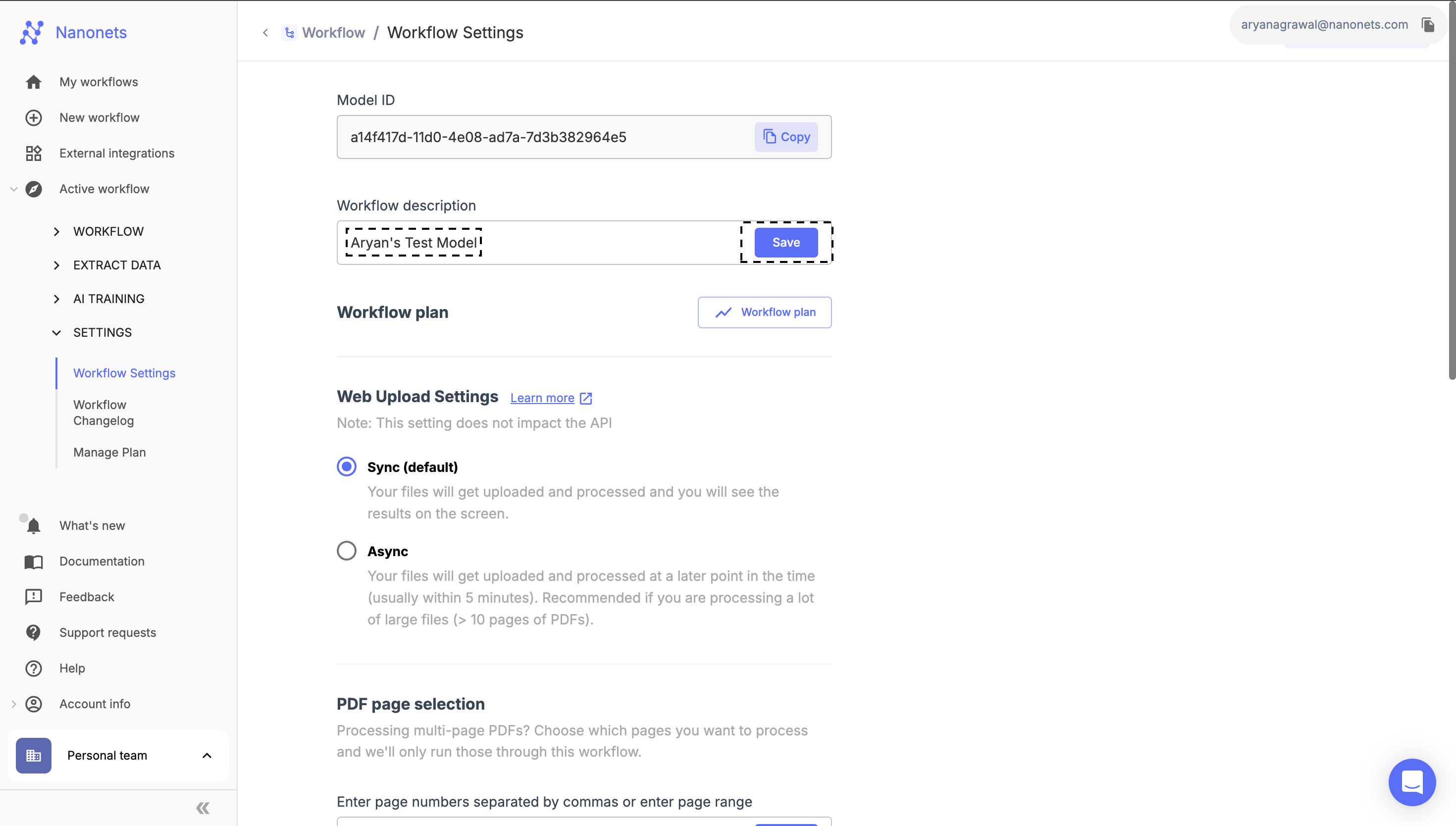
Manage Plan
The "Workflow Plan" section provides access to the Manage Plan page, where you can oversee your current subscription. This includes viewing a summary of the features included in your plan, managing your payment method, and updating your subscription as needed.
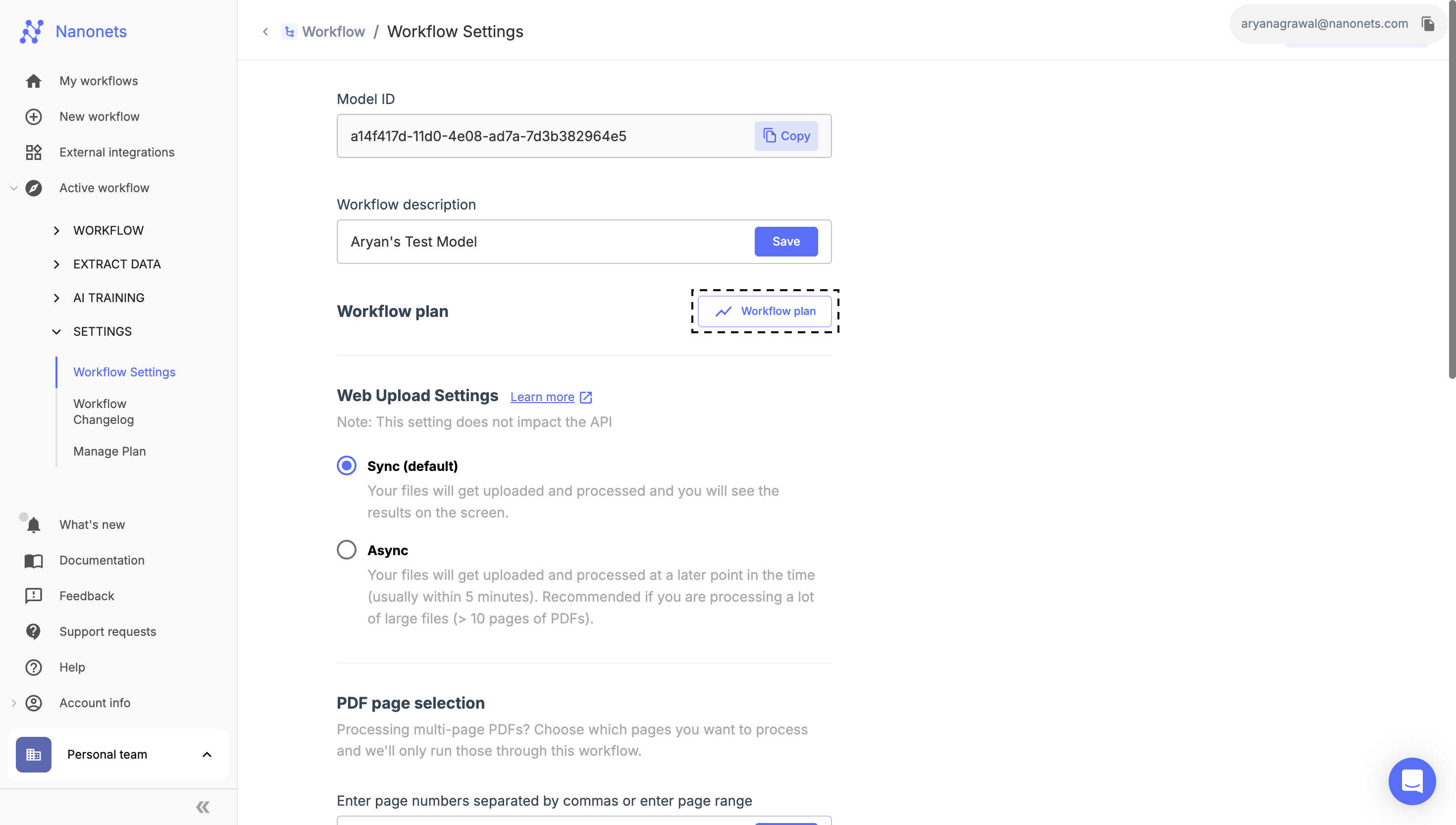
2. File Upload Setting
In this section of the Workflow settings, you can determine how your files are processed when uploaded. Nanonets offers two options:
- Sync: The file is uploaded and processed immediately, with results displayed on the screen.
- Async: The file is uploaded and processed later (typically within 5 minutes). This option is ideal for handling large files (e.g., PDFs with more than 3 pages).
By choosing the appropriate option, you can optimize the processing time and resources based on the file size and urgency.
Note: By default for all models “Sync” upload setting is selected.
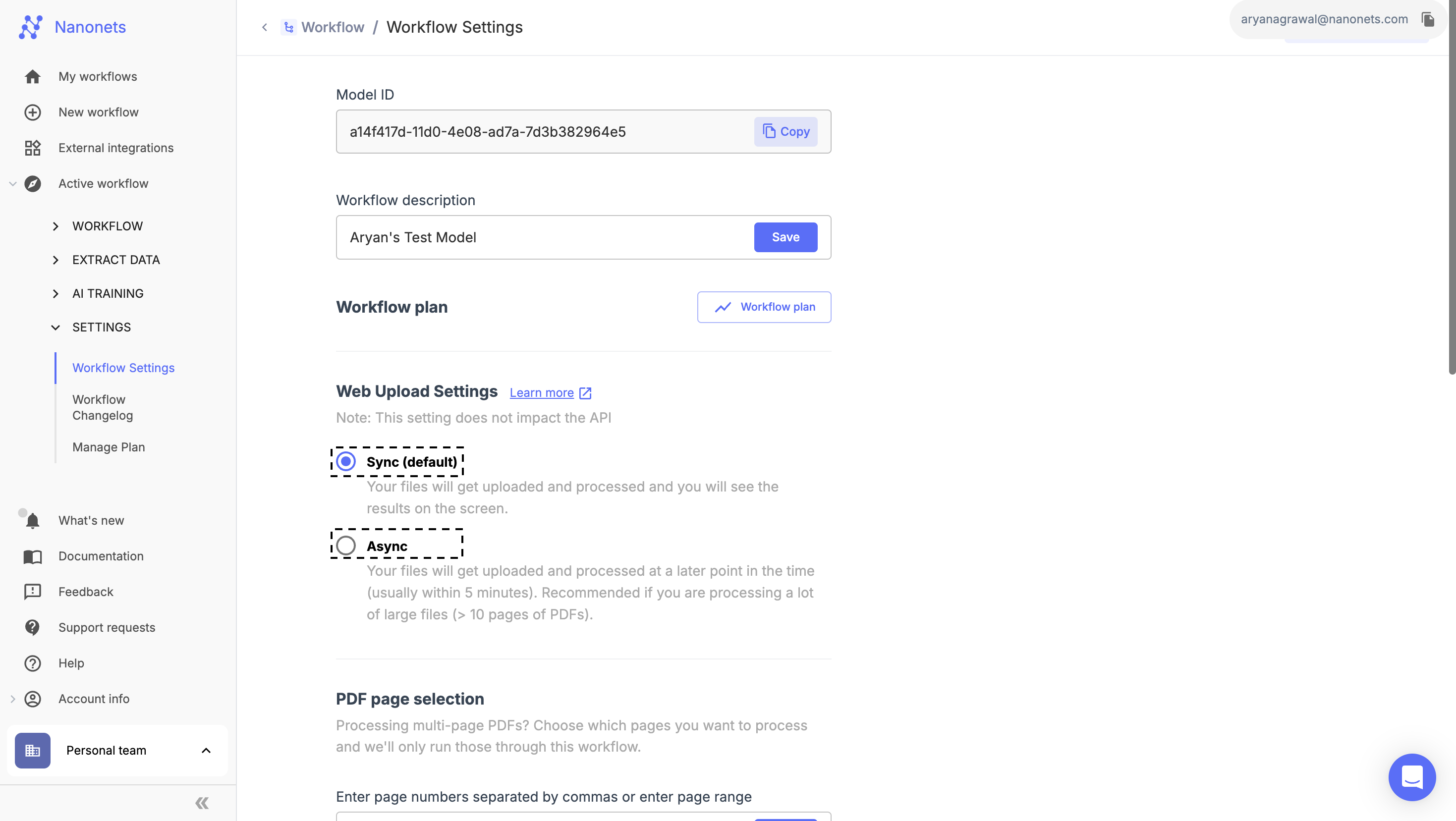
3. Page Process Setting
The Page Process Setting feature allows selective processing of specific pages within a document, providing flexibility for different use cases:
Note: Page Number starts from 1
- Use Case 1: Process only the first two pages of a document.
- Enter
1:2in the "PDF Page Selection" box and click the apply button.
- Enter
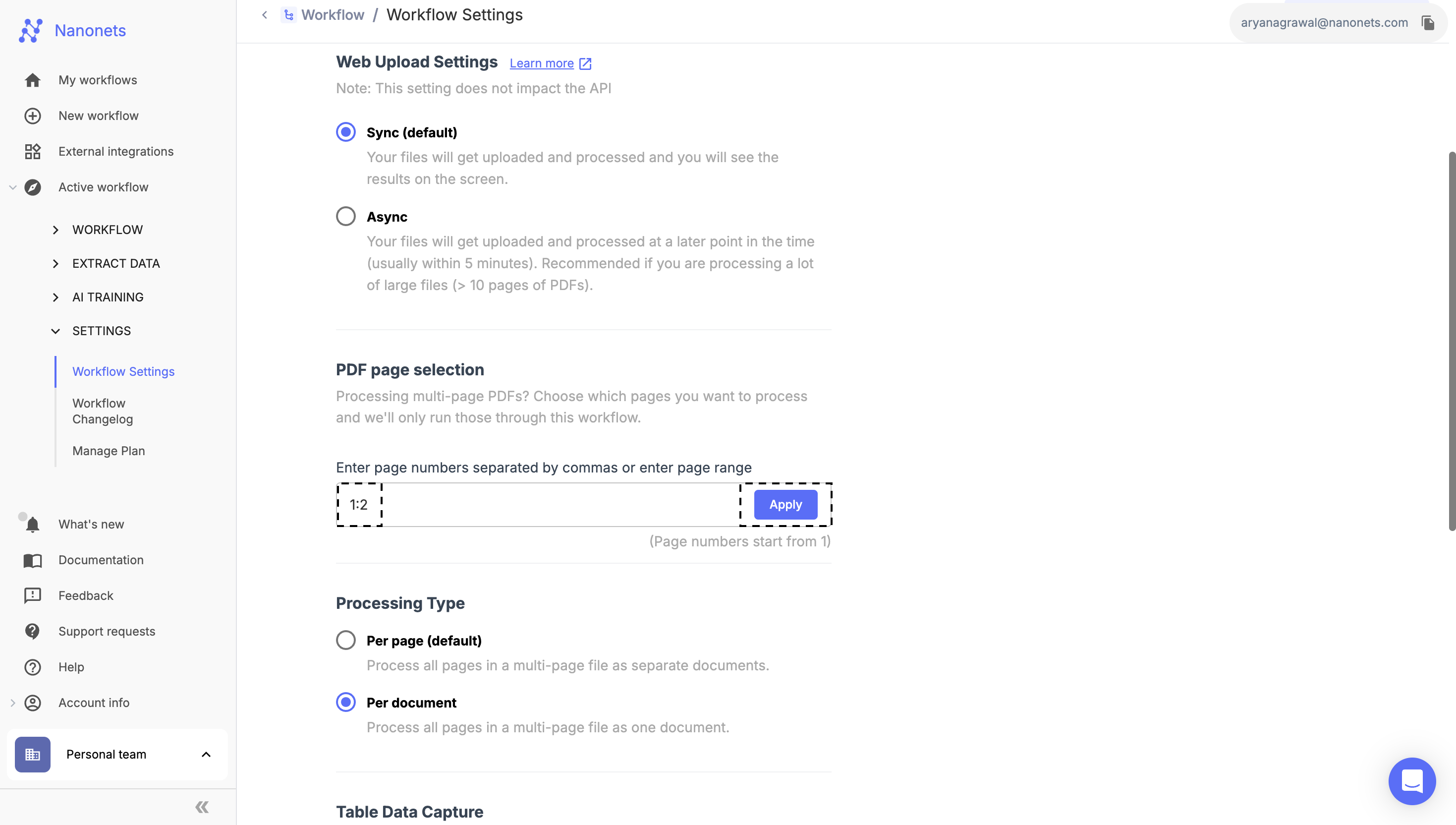
- Use Case 2: Process non-sequential pages (e.g., 3rd, 6th, and 7th pages of a 10-page document).
- Enter
3,6,7in the "PDF Page Selection" box and click the apply button.
- Enter
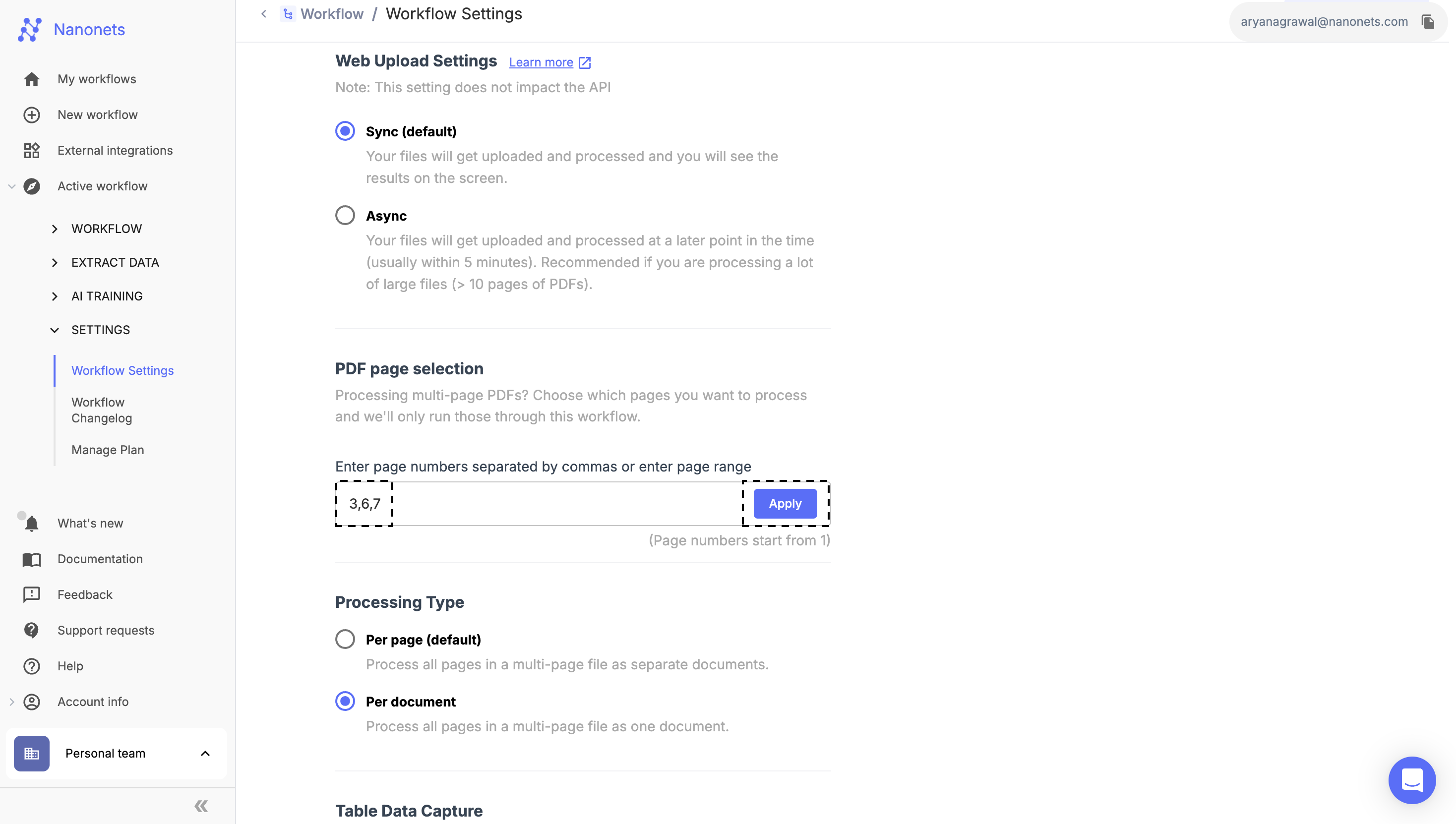
- Use Case 3: Process the last three pages of a document, regardless of the document’s length.
- Enter
-3:-1in the "PDF Page Selection" box and click the apply button.
- Enter
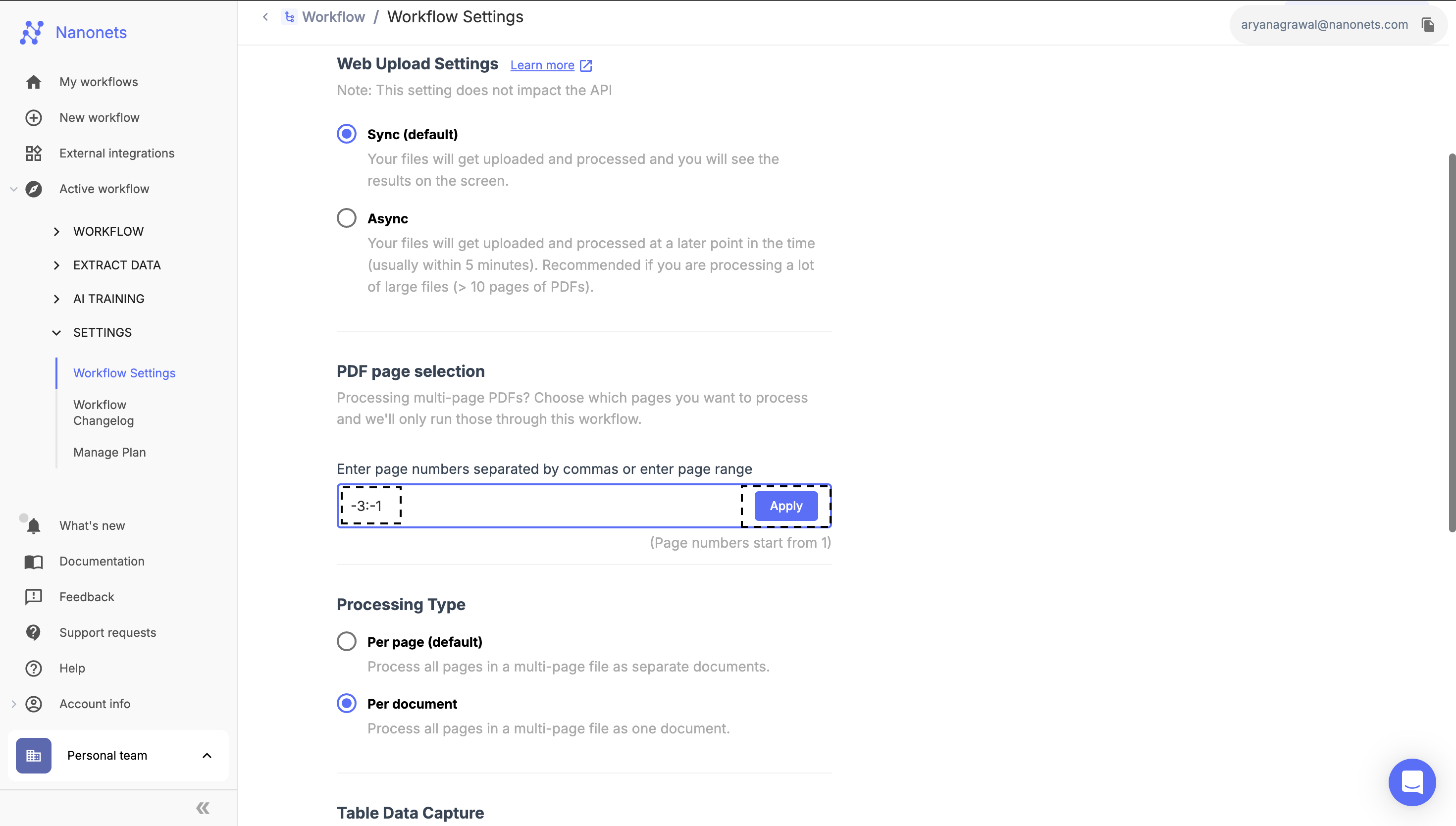
- Use Case 4: Process a specific page (e.g., the 3rd page of a 100-page document).
- Enter
3in the "PDF Page Selection" box and click the apply button. - For processing only the last page, enter
-1in the "PDF Page Selection" box.
- Enter
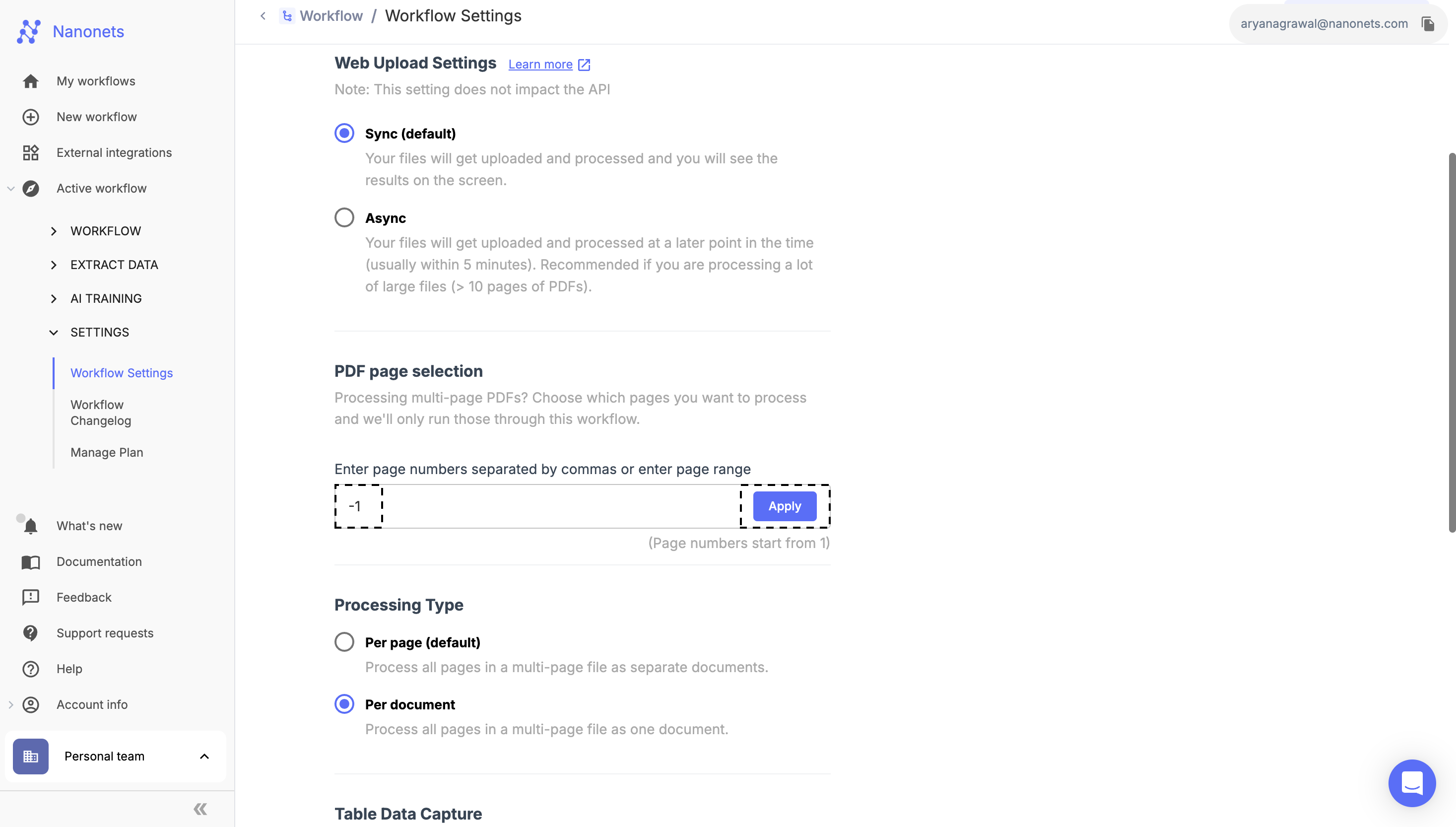
4. File Process Setting
This section allows you to choose how files are processed within the model. Nanonets offers two options:
Note: By default all files are processed the page level(Per Page)
- Page Level: Process all pages in a multi-page file as separate documents.
- Use Case: If you need to process each page of a file individually and obtain results for each page separately, select this option. Each page will be treated as a distinct document, with separate results provided for each page.
- Expected Result: It show’s the values extracted from each page only on that page
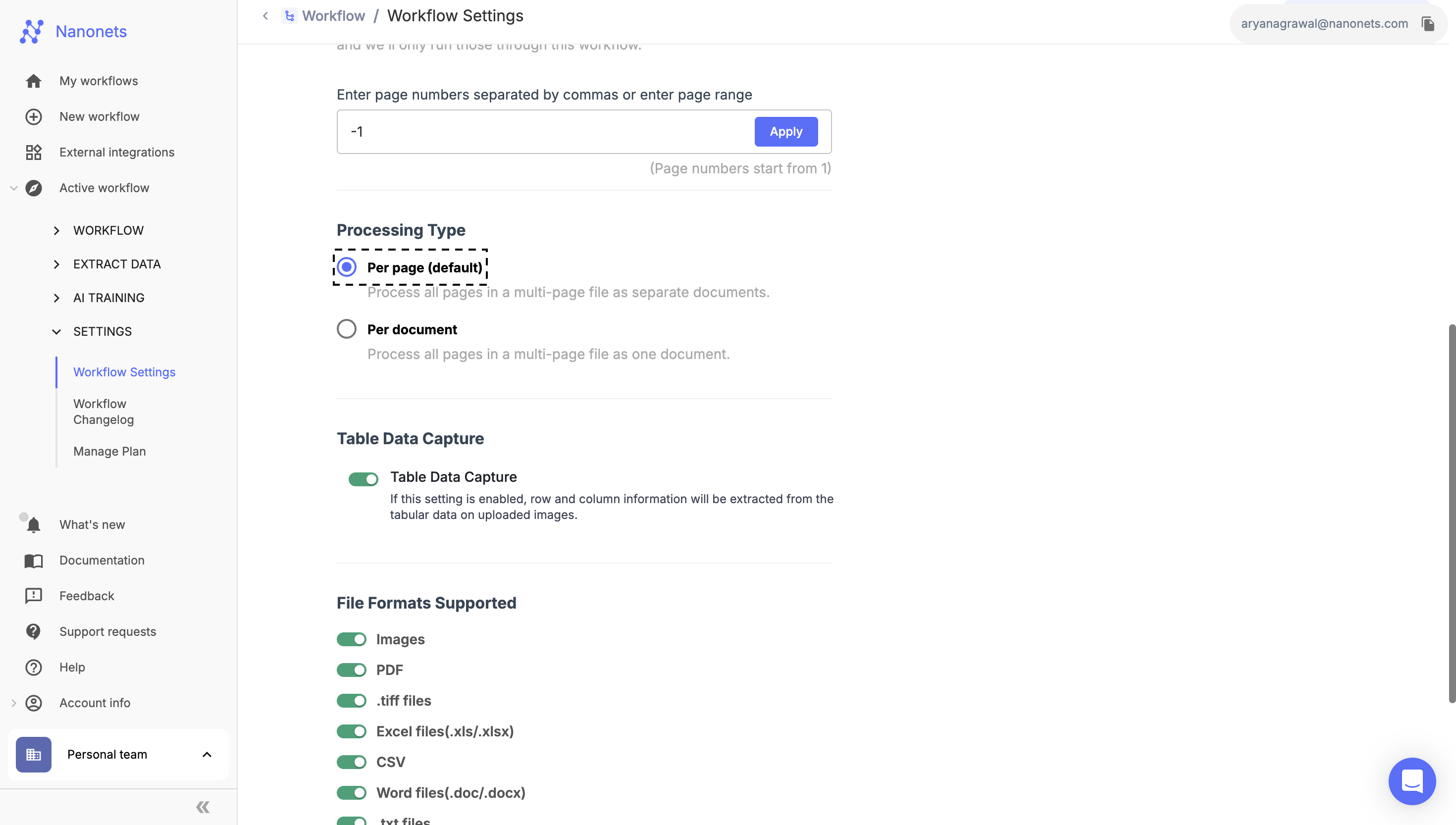
- Document Level: Process all pages in a multi-page file as a single document.
- Use Case: If your goal is to extract fields or table headers from an entire document and you prefer a unified result rather than separate predictions for each page, select this option. All pages will be processed together as one document, generating a single prediction that encompasses all the pages.
- Expected Result: It show’s the extracted information from all the pages on every page
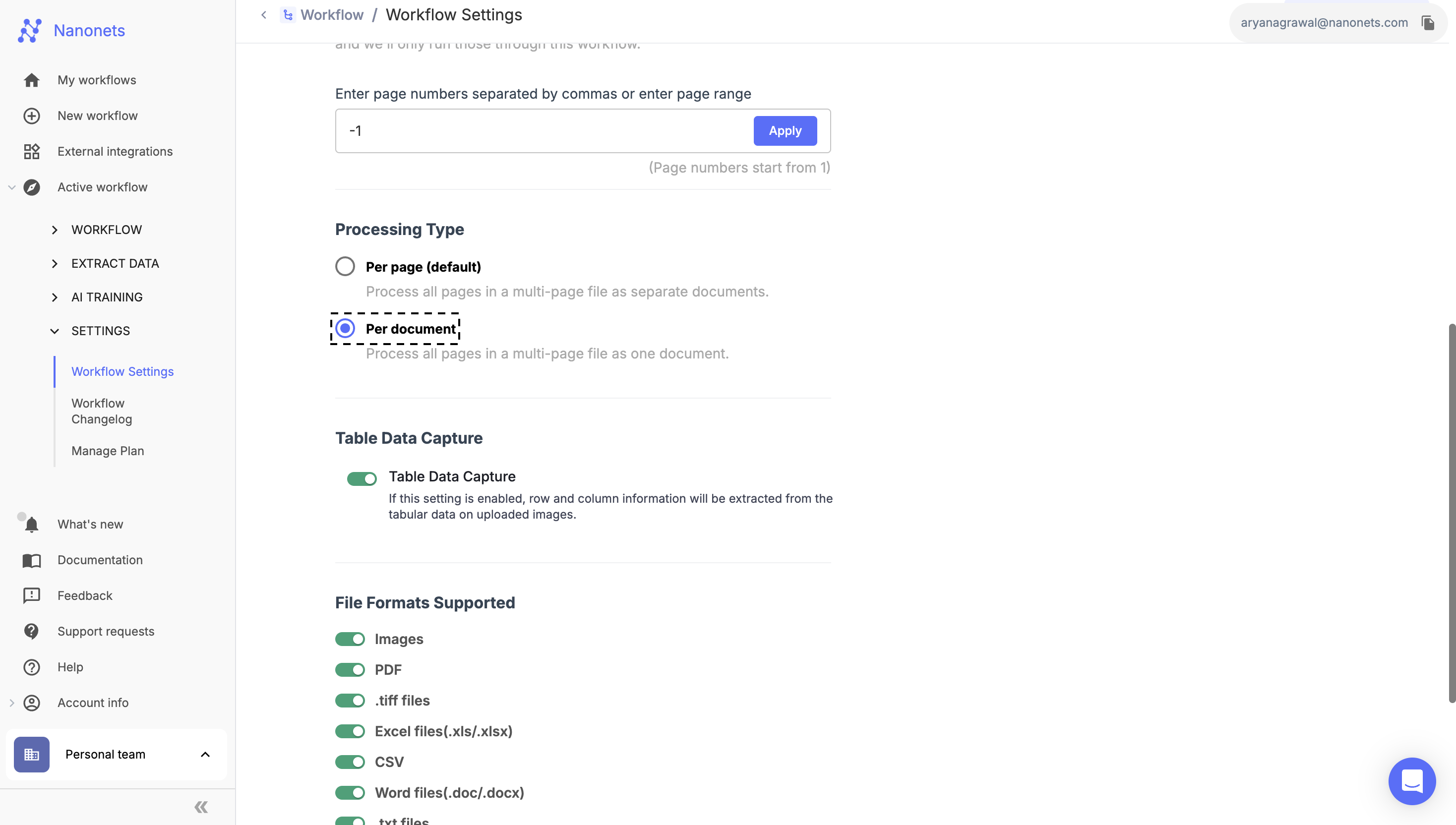
5. Table Capture
This section allows you to configure whether you want to extract tables within your model. Simply use the toggle to enable or disable this setting based on your needs. When enabled, the model will identify and extract tables from the uploaded documents.
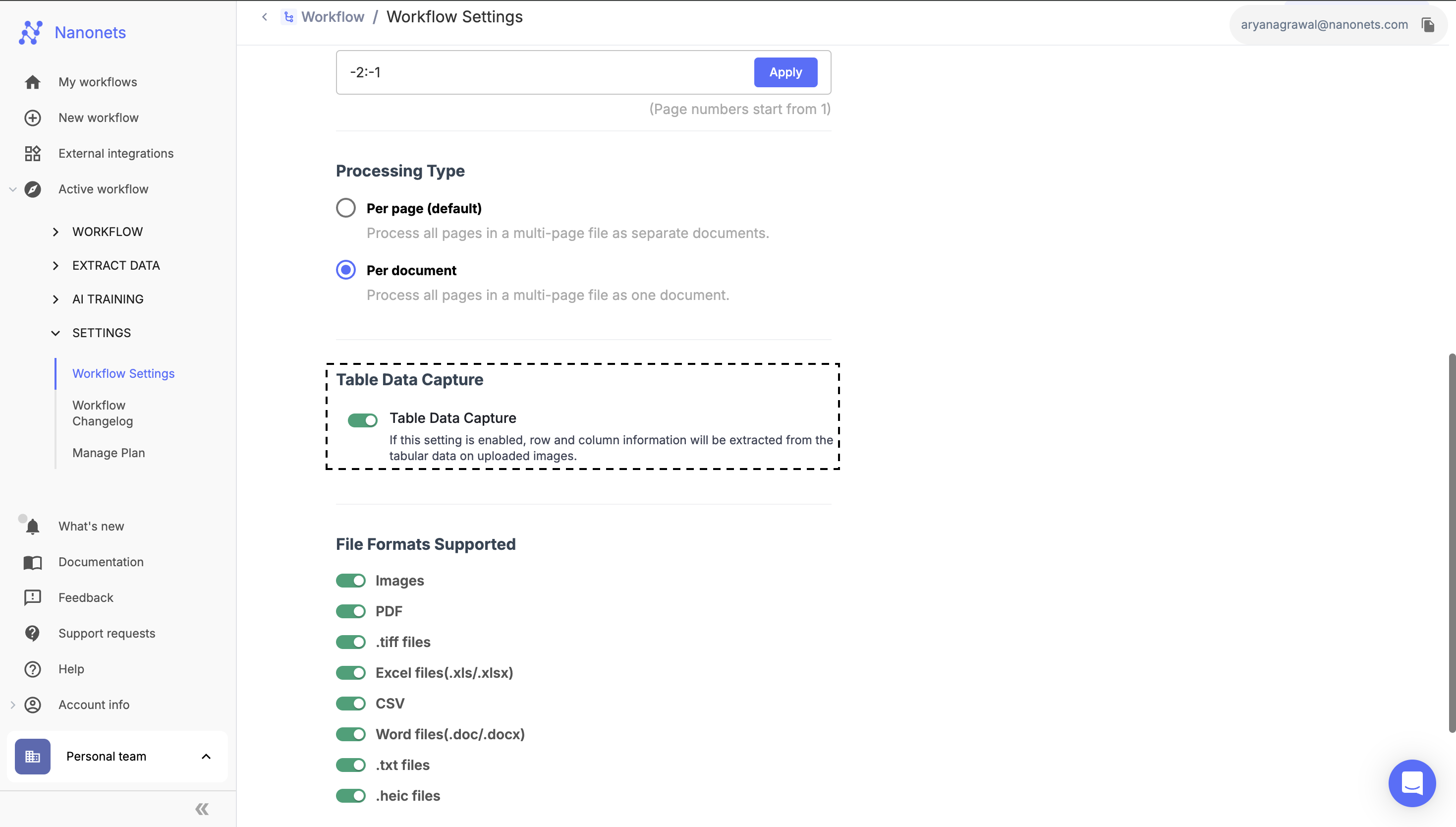
6. File Formats Supported
This section allows you to specify which file formats your model will support during processing. By selecting the appropriate formats, you can ensure consistency in the types of files being processed and avoid errors related to unsupported file formats.
Use the toggle to select the file formats you want to process, you can process multiple file formats in your model.
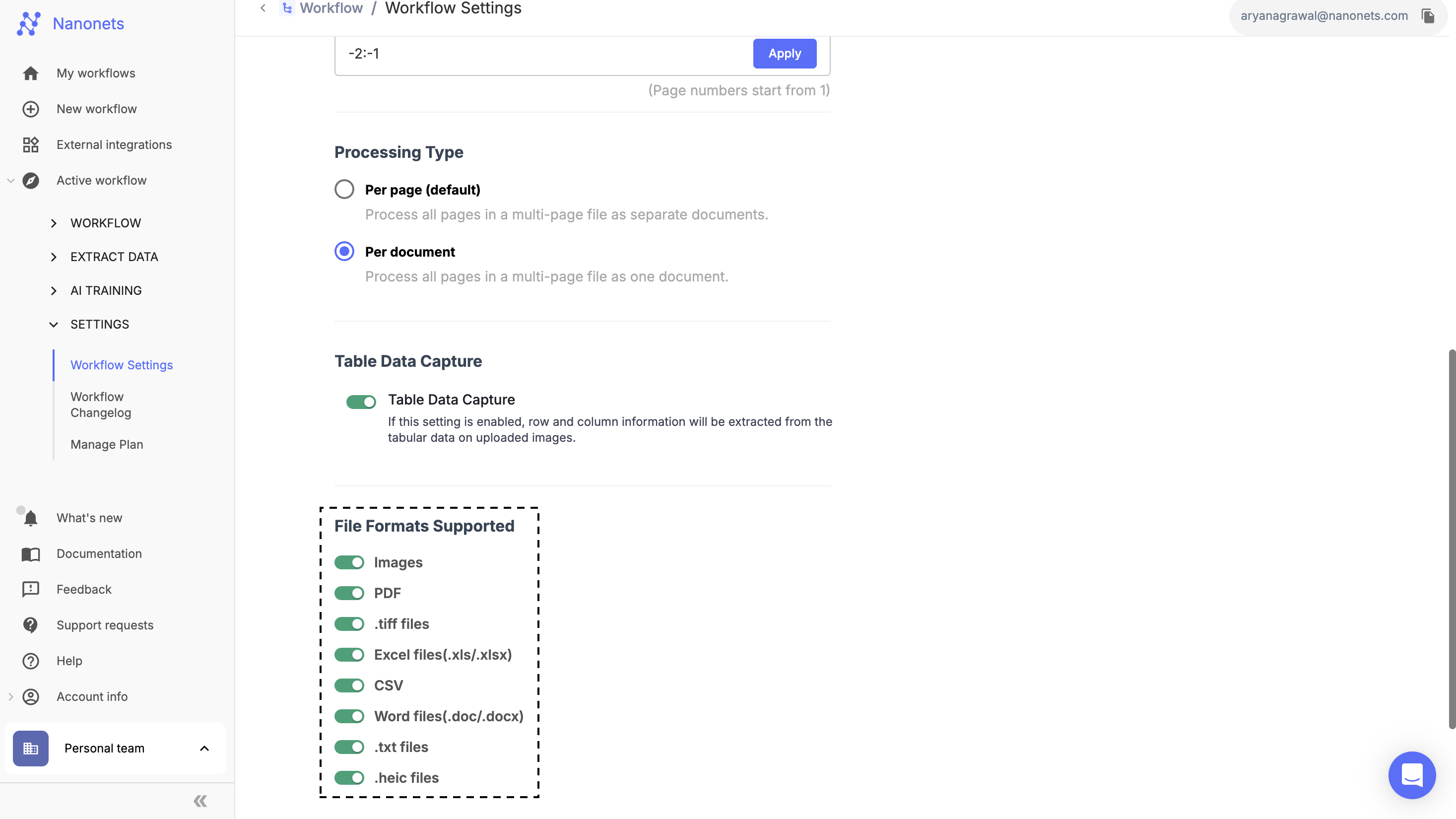
Updated 8 months ago
